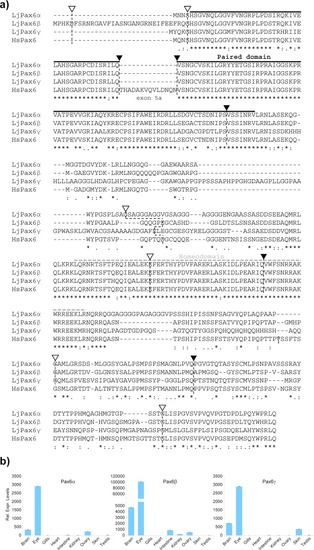- Title
-
Lampreys, the jawless vertebrates, contain three Pax6 genes with distinct expression in eye, brain and pancreas
- Authors
- Ravi, V., Bhatia, S., Shingate, P., Tay, B.H., Venkatesh, B., Kleinjan, D.A.
- Source
- Full text @ Sci. Rep.
|
The lamprey genome contains three |
|
Protein sequences and expression patterns of the Japanese lamprey |
|
Maximum Likelihood tree of vertebrate |
|
An ancient vertebrate conserved non-coding element is present in the lamprey EXPRESSION / LABELING:
|




